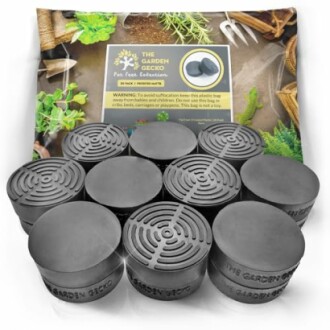
Vertical Hydroponics: What You Need to Know
Key Takeaways
- Vertical hydroponics maximizes limited space, making it ideal for urban gardeners.
- Using hydroponic systems, you can grow plants without soil, providing faster nutrient absorption.
- Different hydroponic systems include nutrient film techniques, deep water culture, and aeroponics.
- Choosing the right plants is essential for successful vertical gardening. Focus on quick-growing varieties.
- Proper maintenance and monitoring of nutrient levels are crucial for thriving plants.
As urban dwellers face space constraints, vertical hydroponics emerges as an innovative solution to cultivate greenery even in city apartments. Not only does it optimize limited areas but it also allows you to grow plants efficiently without soil. In this article, we will explore the systems, benefits, and tips to help balcony gardeners successfully embrace vertical hydroponics.
Understanding Vertical Hydroponics
Vertical hydroponics involves growing plants in vertically stacked layers, utilizing structures like towers, walls, or wall-mounted planters. This method saves ground space while maximizing light exposure for the plants. With many different hydroponic systems available, it's essential to know the most common designs:
| Hydroponic System | Description |
|---|---|
| Nutrient Film Technique (NFT) | A thin film of nutrient-rich water flows over the roots, allowing them to absorb nutrients efficiently. |
| Deep Water Culture (DWC) | Plants are suspended in nutrient-rich water, which provides oxygen through air stones. |
| Aeroponics | Plants are suspended in air and misted with a nutrient solution for optimal growth. |
Benefits of Vertical Hydroponics
Vertical hydroponics offers several advantages for balcony gardeners:
- Space-saving: Vertical setups allow you to grow more plants in limited space.
- Water efficiency: Hydroponics uses less water than traditional gardening, making it environmentally friendly.
- Faster growth: Plants grown hydroponically often grow faster due to improved nutrient availability.
- Year-round gardening: Controlled environments allow for consistent growth throughout the year.
- Less pest and disease issues: Soil-less growing reduces the risk of soil-borne diseases and pests.
Choosing the Right Plants for Vertical Hydroponics
When planning your vertical garden, selecting the right plants is crucial for success. Popular choices include:
| Plant | Growth Rate | Space Requirement |
|---|---|---|
| Lettuce | Fast | Low |
| Herbs (e.g., basil, mint) | Moderate | Low |
| Strawberries | Moderate | Medium |
| Tomatoes | Slow | High |
Tips for Successful Vertical Hydroponic Gardening
Beginners Section
- Start small: Begin with a few plants to get a feel for the hydroponic systems.
- Monitor nutrient levels: Regularly check and adjust nutrient levels in your system.
- Provide adequate lighting: Use grow lights if natural sunlight is limited.
- Maintain temperature and humidity: Ensure optimal conditions for your plants to thrive.
- Connect with a community: Joining vertical gardening forums can provide valuable insights and tips.
Product Recommendations
To help you set up your vertical hydroponics garden, consider these essential products:
Garden Gecko Invisible Pot Feet
Elevate your pots with these solid rubber pot risers, ensuring excellent drainage and stability.
Learn MoreHydroponic Houseplant Focus
Specifically formulated for hydroponic growing, with all essential nutrients for your plants.
Learn MoreConclusion
Vertical hydroponics presents a fantastic opportunity for urban gardeners to create a lush oasis right on their balconies. By understanding the systems, benefits, and essential tips to cultivate plants, you can transform limited space into a vibrant green sanctuary. Start your vertical hydroponics journey today and enjoy the fruits of your labor!
For more tips on gardening in small spaces, check out our articles on Plant Selection for Balconies and Balcony Gardening Problems and Fixes.

